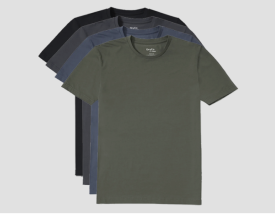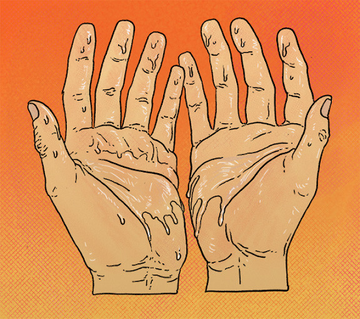Biting winds, bone-chilling cold, wet boots, and dry skin. It truly is the most wonderful time of the year.
Dry, irritated skin is uncomfortable, often causing itching and irritation. These effects are even more pronounced in the dry winter air. As you awaken your chapsticks and ice scrapers from hibernation, we’re taking a look at the best winter wardrobe tips for dry skin. So you can get comfortable just in time to recover your holiday cheer.
Looking for more winter wardrobe tips? Read our guide - Hit the Slopes Sweat-Free: Sweaty Skier Layering Tips.
Dry Skin Fashion Faux-Pas
It’s time to pull your winterwear out of storage, and it’s your best chance to get rid of problem clothing and outdated fashions. This section takes a look at what not to wear for dry skin.
Faux Fur
Faux fur, once the preferred option for animal rights activists is now under fire from environmentalists. The plastics and synthetic materials used to make faux fur are more harmful to the environment than real fur.
But it’s not just the environment that suffers from faux fur. The material is not as soft or light as real fur, and can even damage your skin. On dry skin, it can cause itching or discomfort. You may want to consider making the switch to real fur, or no fur.
Polyester
Man-made fabrics, like polyester, are often treated with toxic chemicals that can irritate the skin. In the winter, our skin is extra sensitive to these irritants. As well, many of these fabrics are non-breathable. This prevents airflow, allowing sweat, rashes, and/or body odor to occur.
If purchasing clothing with synthetic materials, only purchase from trusted suppliers. Many drop shippers and cheap Amazon retailers use inferior products with toxic chemicals. Although you may save a few dollars, you pay for with discomfort, dry skin, and poorly fitting clothes.
Other similar offenders include:
- Acetate
- Nylon
- Rayon
Wool
Going natural isn’t necessarily the solution. Some natural fabrics, like wool, are just as capable of drying out and irritating skin.
When shopping for clothing for dry skin, steer clear of wool. The scratchy fabric is especially problematic for people with sensitive skin, or other skin conditions. For instance, wool is known to trigger eczema flare-ups.
Best Clothing for Dry Skin
The good news is that there are still lots of options for a dry-skin-friendly winter wardrobe. Explore some of the best fabrics and clothing for dry skin.
Natural Fabrics
While wool isn’t a great fit, many other natural fabrics are easy on the skin. Cotton, in particular, is a soft, lightweight, and comfortable material. That’s why Neat uses a 95% cotton blend for our skin-friendly fabrics.
Look for high percentages of natural fibers for clothing that protects your skin from the dry winter air.
Breathable
Breathable fabrics prevent the skin from getting too hot or too cold. They can also help to remove trapped moisture that could otherwise cause fungal growth or chafing. Moisture-wicking fabrics further help resolve this issue. It wicks away sweat, preventing skin irritation as well as body odor.
Layers
Wearing layers is a great way to protect your skin during the winter. Although they keep you warm, heavier shirts and sweaters may have materials that can be uncomfortable and/or dry out your skin. Wearing an undershirt protects dry skin from irritating fabrics, allowing you to wear your favorite clothes - even during the dry winter months!








